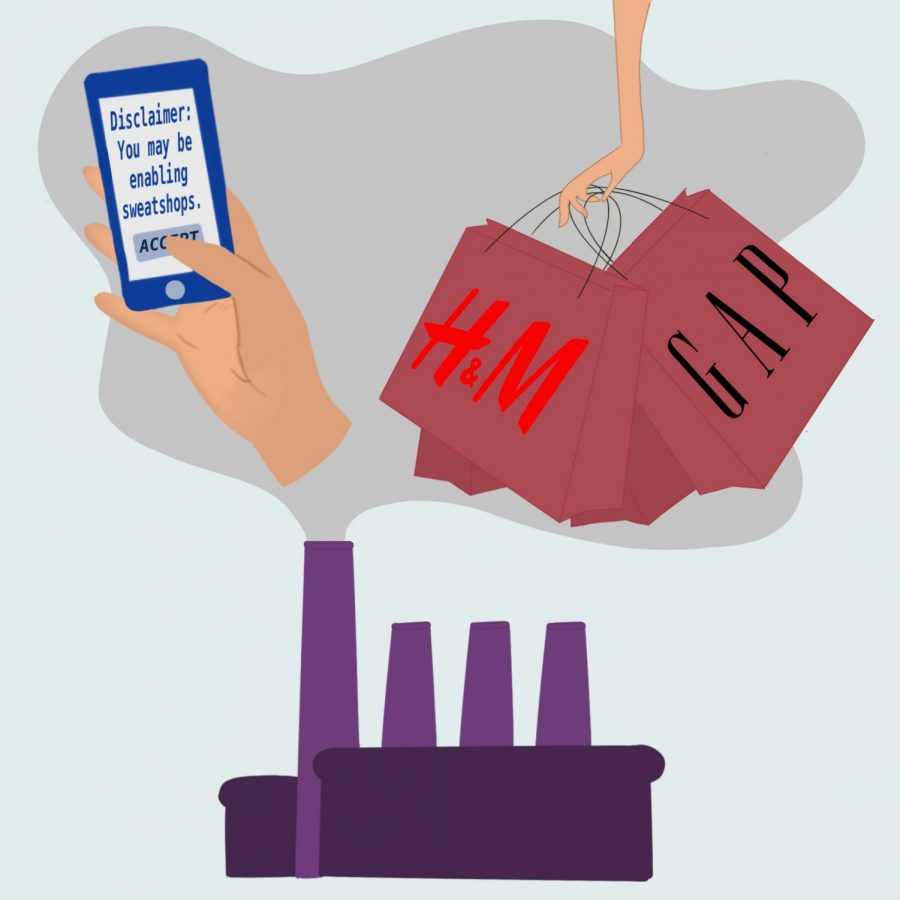The Cost of Fast Fashion
June 3, 2021
In the recent centuries, clothing has significantly changed both in style and manufacturing. Back in the 1800s, getting clothing was a meticulous process. People had to gather their own material, such as wool, prepare them, weave them, and then begin the process of making their clothes. The Industrial Revolution sped up this process with new inventions such as the sewing machine, and subsequently led to a drop in prices for clothing. The direction clothe-making was taking inevitably led to fast fashion, which hit its peak in the 1990s and 2000s with online shopping.
Fast fashion is the mass production of “trendy” clothes and selling them for a cheap price. These clothes tend to be low quality due to cheap materials and labor.
The people behind these cheap clothes tend to work in sweatshops, an unsanitary, crowded and socially unacceptable workspace. These workers are often employed with extremely low wages and work long hours. Factory collapses are also not uncommon with the buildings being horribly maintained with cracks on the ceilings and walls.
The first major factory disaster was in 1911 when a fire broke out at Triangle Shirtwaist Factory in New York and killed 146 workers. Possibly the most infamous clothing factory disaster was the collapse of Rana Plaza in 2013. The eight-story building in Dhaka, Bangladesh housed five garment factories collapsed due to poor construction and too heavy equipment for the structure to handle. The collapse led to the deaths of 1,132 people and 2,500 were injured.
In addition to workers being forced to work in socially unacceptable conditions, fast fashion also takes a toll on animals. Toxic dyes enter waterways and are ingested by marine life and animal safety is endangered when leather and fur are used in products. Some scandals have unveiled that real fur is being passed off as “faux fur” to unknowing shoppers.
Even the world that many of these animals live in is being negatively impacted by fast fashion. Environmental corners are often cut in factories in an effort to speed up production time and reduce costs. This leads to the use of cheap textiles that majorly contribute to Global Warming, such as polyester, land is cleared and an increase of clothes being discarded into landfills.
This being said, there are positive aspects to fast fashion. One is that it allows families of lower-incomes to spend money on clothes without losing a bulk of their savings on sustainable clothes that cost $50. It also gives millions of people in developing countries a wage to support their families. The true issue with fast fashion are those who regularly shop from notorious fast fashion stores and spend hundreds of dollars on cheap clothing to throw out when it is out of style.
It is still encouraged to avoid fast fashion stores and support sustainable brands. This is unrealistic for some people, so an alternative way to not actively support fast fashion is to buy less and buy clothes that are wearable long after they are out of style. Another alternative is to purchase clothes from thrift stores which often come at cheap prices and encourage the recycling of clothes.
The key characteristics of a fast fashion brand are if they sell thousands of “trendy” clothes, replicate styles on runways or on celebrities very quickly, have factories in different countries where labor is the cheapest, or sell at cheap prices with low quality clothes.
The best known fast fashion brands are H&M, Zara, Forever 21, Shein, Romwe, GAP, Primark, Topshop, and UNIQLO.
Alternative brands that sell sustainable clothes are People Tree, Patagonia, Pact, Kotn, Happy Earth, Boody, and tentree.



